Prairie Sentinels – Abbey Saskatchewan
Join us as we explore the last grain elevator in Abbey Saskatchewan, a small town on the open prairie, a tiny dot on the map, in the proverbial middle of nowhere. We’ve only been in the province for half a day and this is already the forth prairie sentinel we’ve documented. There are more extant elevators here then anywhere else in the west and we’re visiting to take in as many as we can in the five days we have. In spite of the fast pace, we’re relaxed, more so then we have been in a long time. Saskatchewan has a way of doing that to a person.
We’ll eventually see perhaps fifteen to twenty grain elevators in total this trip (I haven’t finished tallying it all up yet) and each was as exciting as the next.
This structure was built for the Saskatchewan Wheat Pool (aka SWP) and is listed as their “B” facility. When you see one with a letter or number on its side, it means the company owned more than one elevator at specific loading point. Abbey originally had two SWP elevators, one built new in the late 1920s and one inherited from the Saskatchewan Cooperative Elevator Company (a predecessor of the SWP) in the mid-1920s. That one was built in the 1913.
In addition to the elevators mentioned above there used to be others here. Companies represented include Federal Grain (2 elevators), Olgilvie Flour Mills and some others.
At the peak, there were six elevators in Abbey. Some obscure documents found buy this author mention that in the 1970s, the total had dwindled to four, all of which, according to the writer of that article, belonged to the Pool. Hmmm. This suggests that the SWP bought some elevators from its in-town competitors at some point (not an unusual occurrence).
The Saskatchewan Wheat Pool was formed in the mid-1920s as a farmer owned cooperative. Traditionally the largest grain company in the province, it naturally owned the most grain elevators. In every town, it seems, the SWP had a presence. Not surprising I guess, most of the elevators seen this trip once belonged to that company. The Pool, as it’s often called, as of 2007 is a public company and is known as Vittera. They still handle grain but use huge inland terminals to do that and instead of loading a few cars at a time, they can fill an entire train.
This elevator is fairly new, as far as wood-cribbed grain elevators go, having been built in 1974. Visually and operational wise however it has more in common with those built decades before then the new giant high-throughput concrete or steel versions that would follow in the 1990s. For many, many years (from around 1900 to the mid-1980s), the traditional wooden grain elevator did not change much. At least on the outside. Did the grain companies resist change or was the design so perfect and proven that no change was needed? Any experts care to chime in?
The two annexes seen are older and date from the 1950s. Perhaps this current elevator replaced an older one (maybe the old SCEC vator?), but the annexes, which still had some life left in them, were kept. That’s a possibility, but one that’s not been confirmed. Annexes were a quick and easy (and cheap) way to add capacity to an elevator. Most old ones were wood as seen here. More modern ones typically use steel bins.
It’s not known when the elevator was closed or if the building is currently empty or used, perhaps, to store grain for a local farmer, or farmers. Many surviving elevators are used this way.
Pictures found on the internet from a few years ago show the upper wall on the railway facing side of the building with a huge gaping hole in it. It’s not clear what happened. The repair made is obvious and can be seen in the first picture above the word “Saskatchewan”.
The rail cars seen on the elevator siding are being stored. Many shortline companies, like the Great Sandhills Railway who owns the track here, make extra money doing this. In fact, nearly every siding along their line that we passed was filled up. These cars can sit for a long time, depending on business levels and the like. Or they may be called back to service right away. It’s a nice sideline business.
The track seen here is a former CPR branch, built in the period 1911-14, which once ran from Bassano Alberta to a point near Swift Current Saskatchewan. It was connected to the railway’s mainline at both ends and also had a number of feeder branches off of it. Then as today, the main commodity hauled is grain. There is also a number of oil and gas related industries along the line, which produce a good deal of traffic. In the past, it was an outlet for eastbound coal coming in from a connecting line from the Red Deer River valley near Drumheller.
By the time the Great Sandhills Railway purchased the line from the CPR, in 2009, the only portion left was a section from Swift Current to a point near Burstall, close to the Alberta border. The CPR, I bet was happy to rid itself of the line – grain branches are rarely money makers. The current operator seems to be doing okay however and I hear they run trains a couple times a week. In fact, we passed one and it was pretty long. A good sign I guess.
While shooting the elevator we were approached by a local fellow (as often happens) and we spoke with him for a time about nothing in particular. He told us that Abbey had the first elevator in the province. Puzzled, I asked if he meant the oldest? But I know that can’t be. “No” he said, “alphabetically!” Indeed, if we look it that way Abbey is first. It’s true.
I found an old bicycle in the grass near the elevator and it made me pause to wonder about the person it once belonged to. Who were they, and what became of them? Were they a kid and was the bike their pride and joy? My mind often wonders things like this. It’s seem like a insignificant price of junk, but it has a history, one we’ll never know.
Abbey was founded in 1913, when the railway came through. Today it’s home to around a hundred and thirty people.
We simply love Saskatchewan, it’s history explorer’s dream. While the main thrust of this trip was to take in grain elevators, we also spent time exploring ghost towns, railway lines, churches, bridges and other interesting places. We only scratched the surface and for every one thing we documented, we had to pass up several others of interest.
This article is by no means even close to complete and many questions are as yet unanswered. We’ll continue to research however and would also love to hear from our readers if they know more about the elevator seen here and any of those that used to stand nearby.
To see some other grain elevators we’ve explored, including some in nearby towns, follow these links…
Prairie Sentinels – Portreeve Saskatchewan.
Prairie Sentinels – Prelate Saskatchewan.
Prairie Sentinels – Delia Alberta.
If you wish more information on what you’ve seen here, by all means contact us!
Date of adventure: May, 2014.
Location: Abbey, SK.
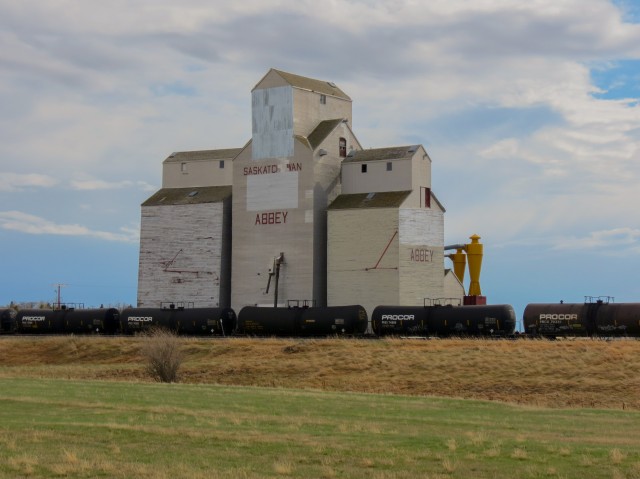
The last grain elevator in Abbey Saskatchewan.
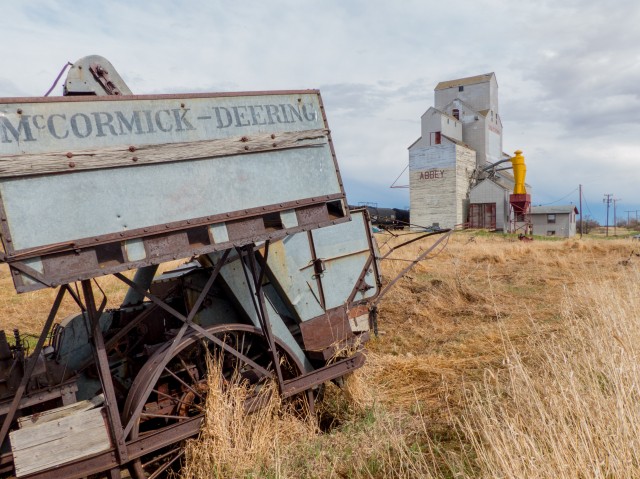
Some old farm equipment helps complete the scene.
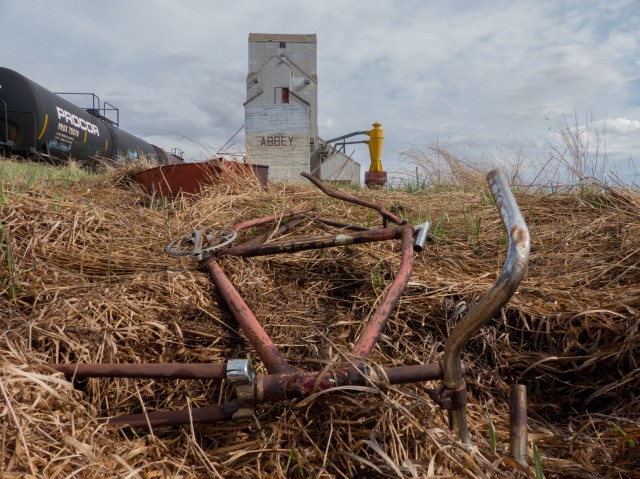
An old bike found in the grass.
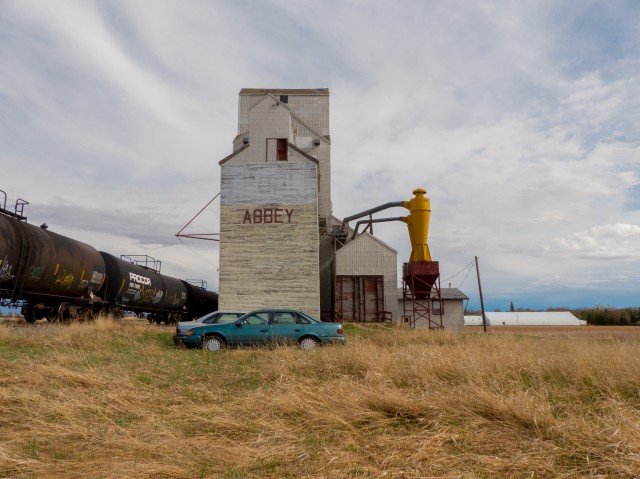
The elevator siding is being used to store surplus rail cars.
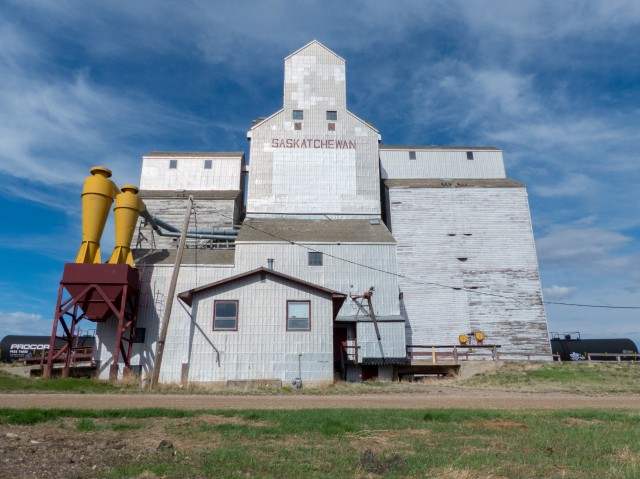
This is a former Saskatchewan Wheat Pool facility.
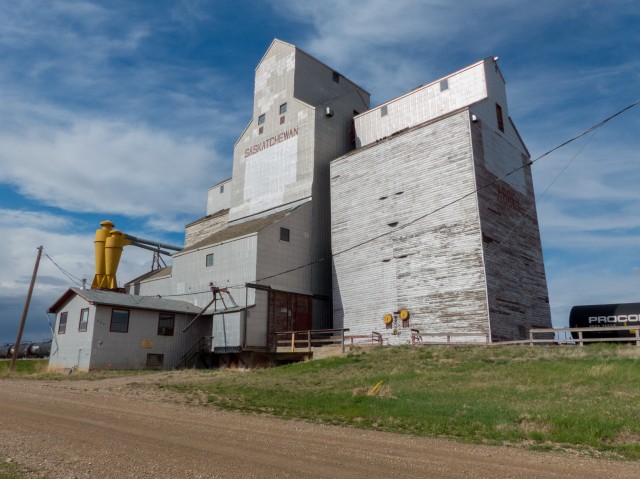
According to records, the elevator was built in 1974, although the annexes are older.

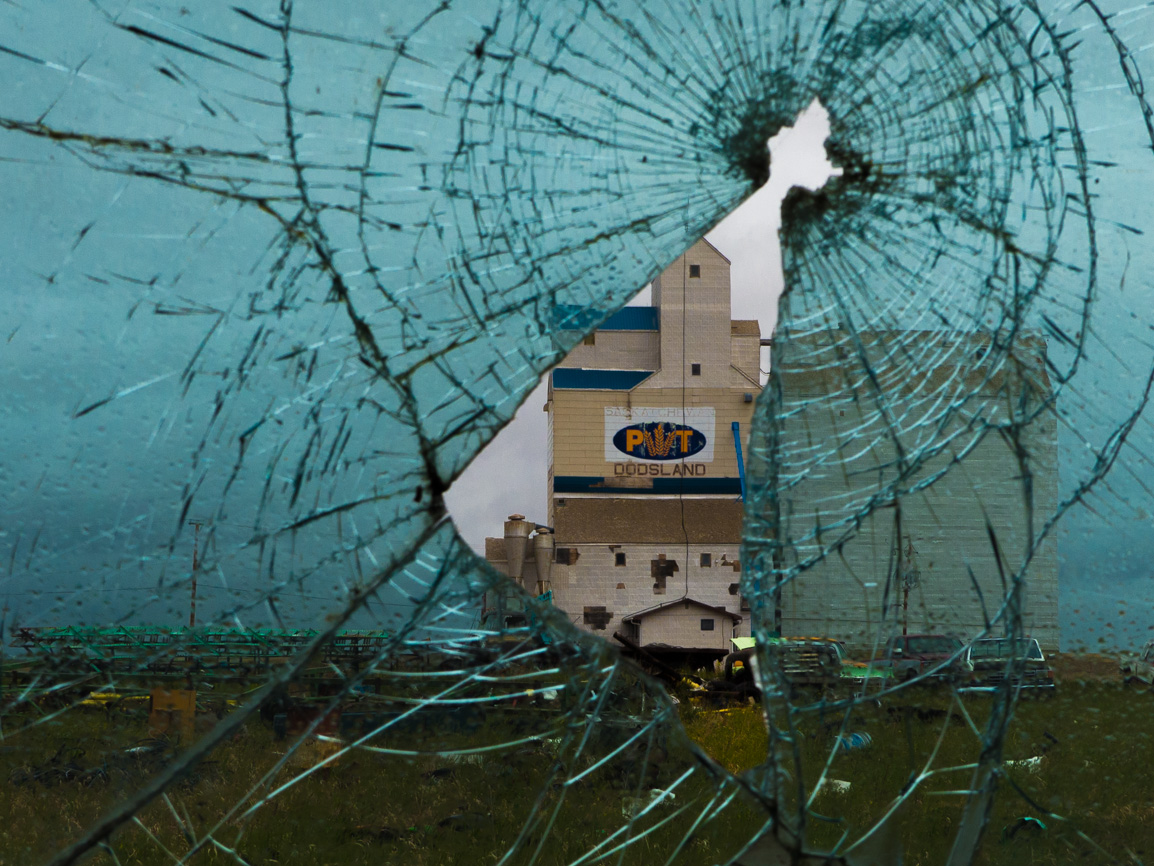
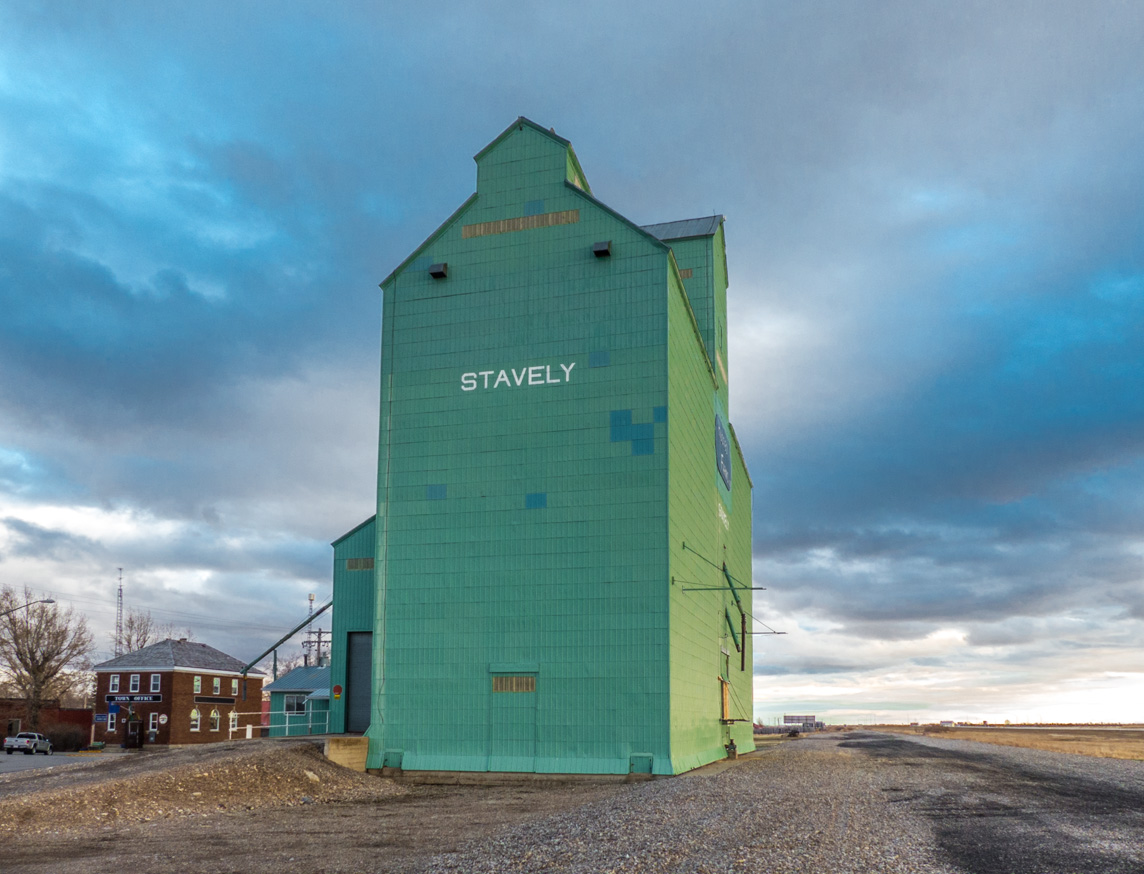
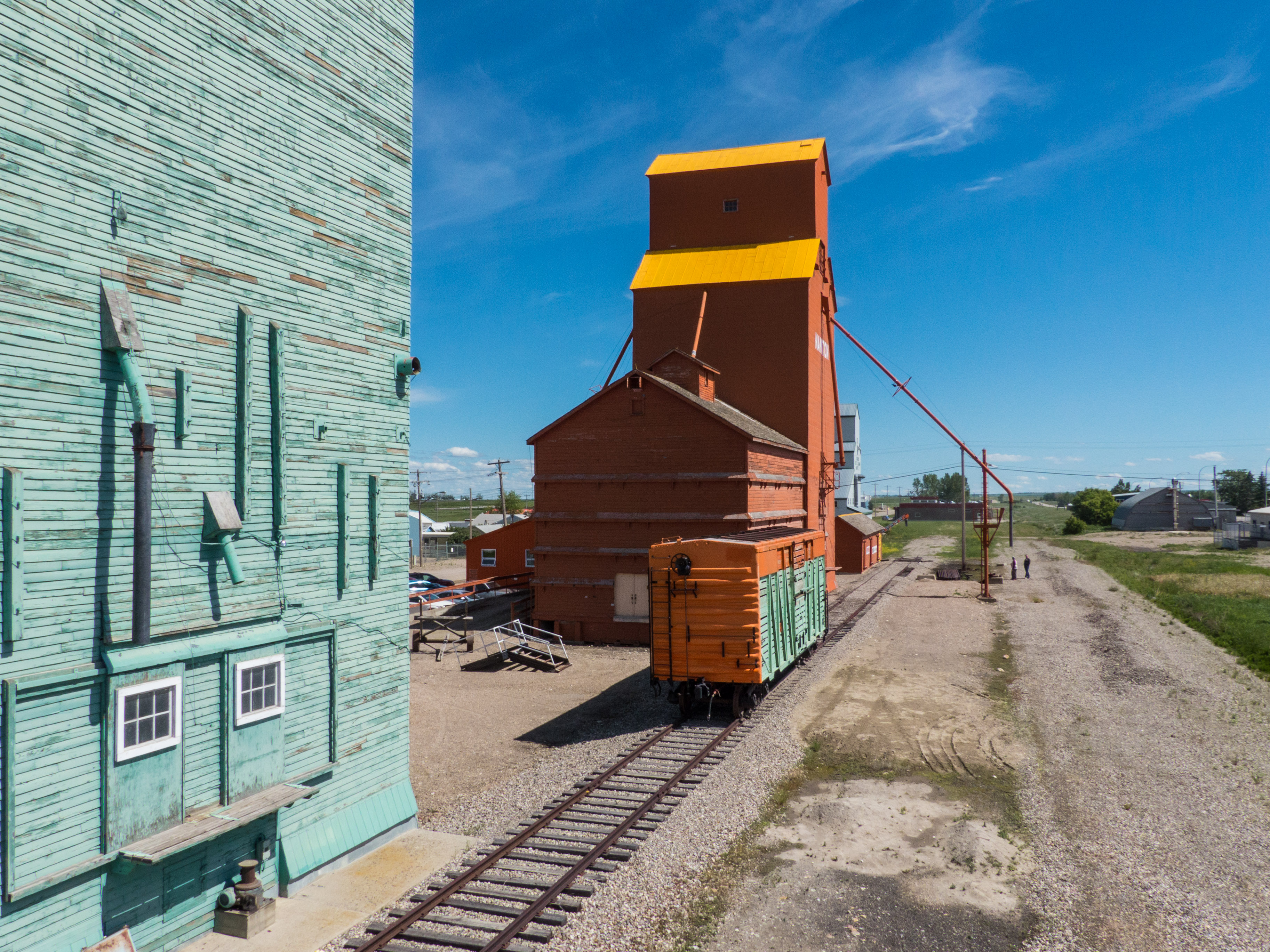
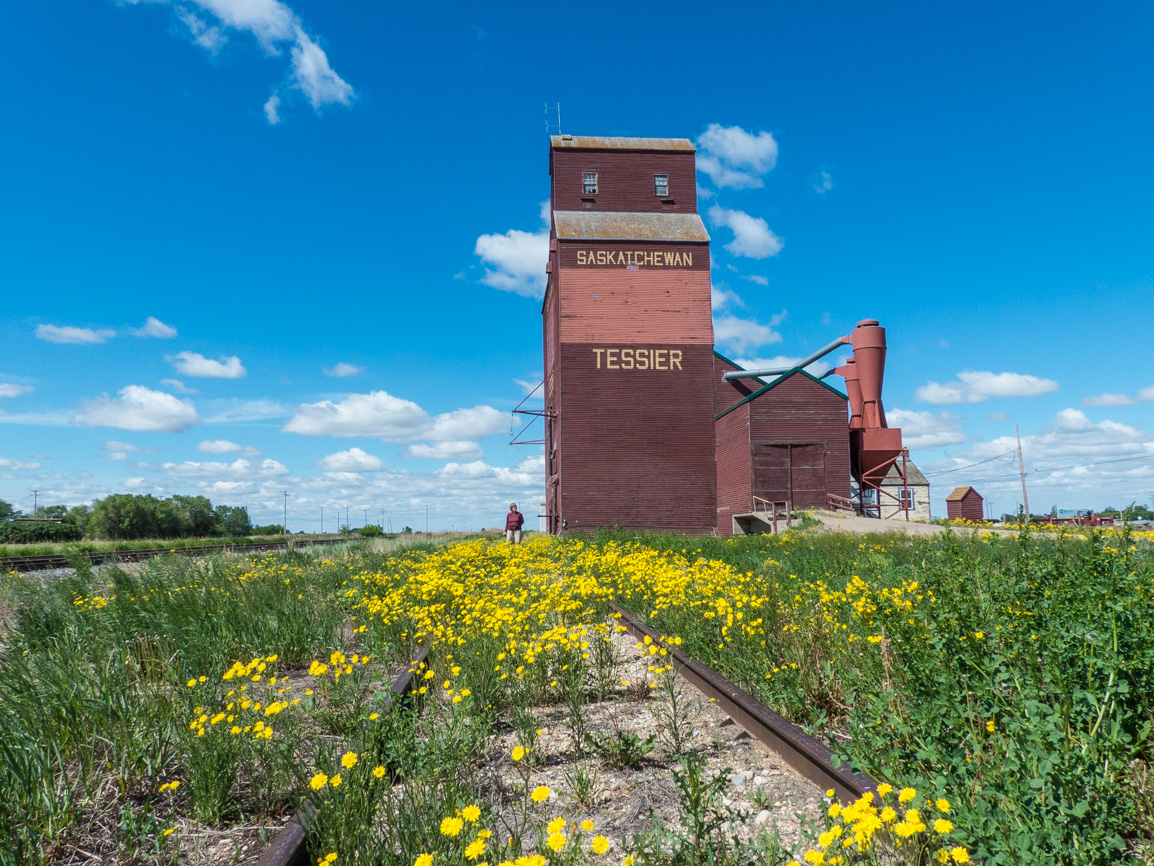

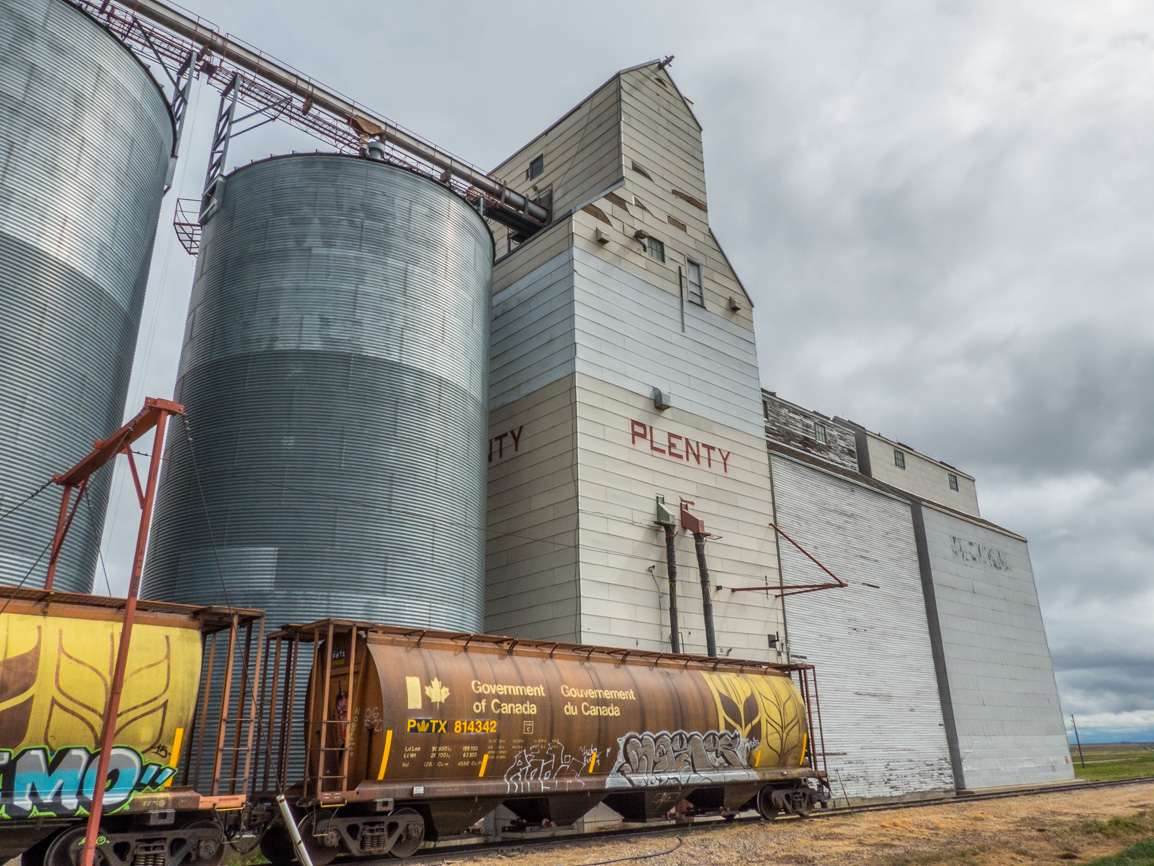
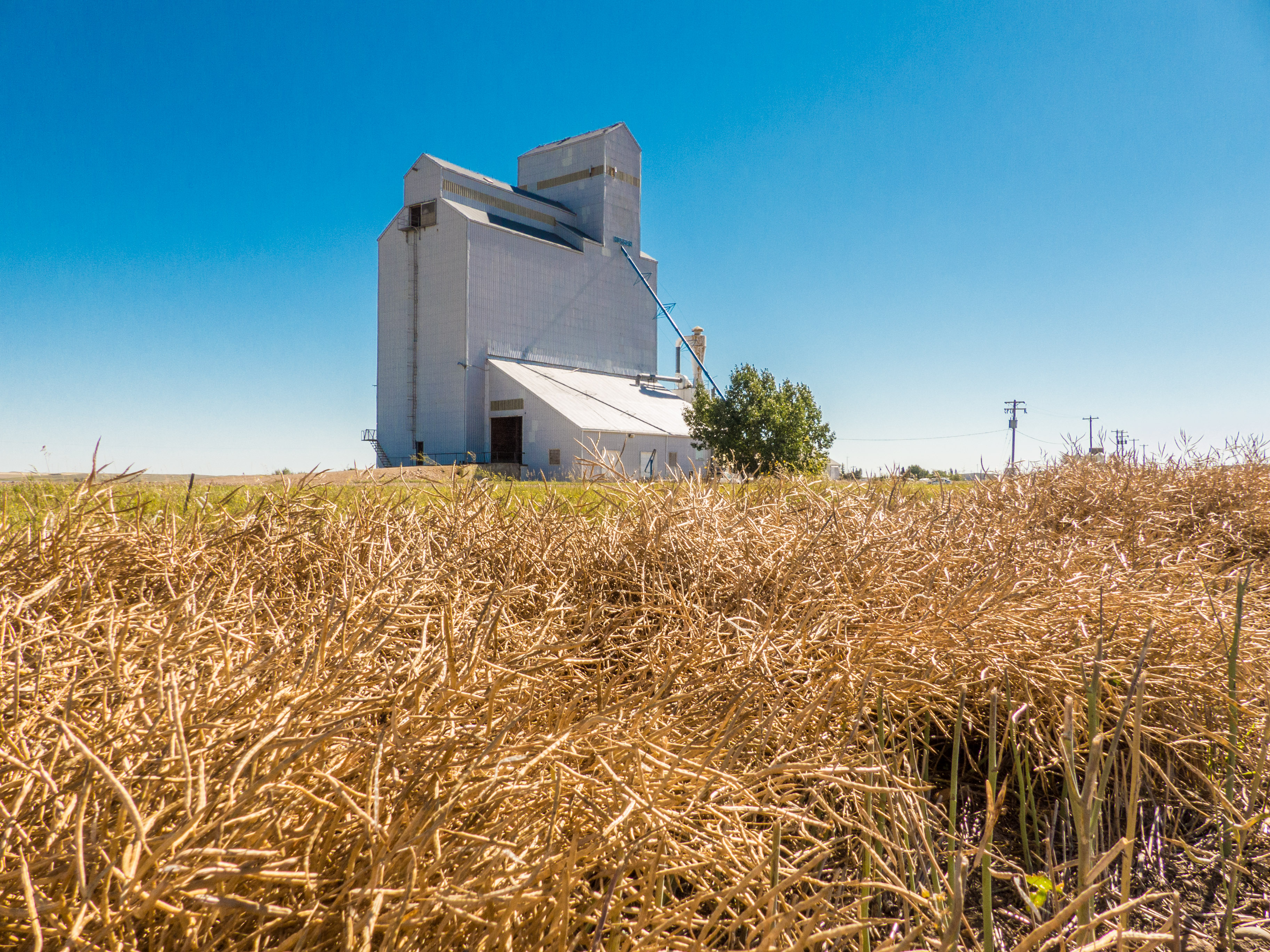
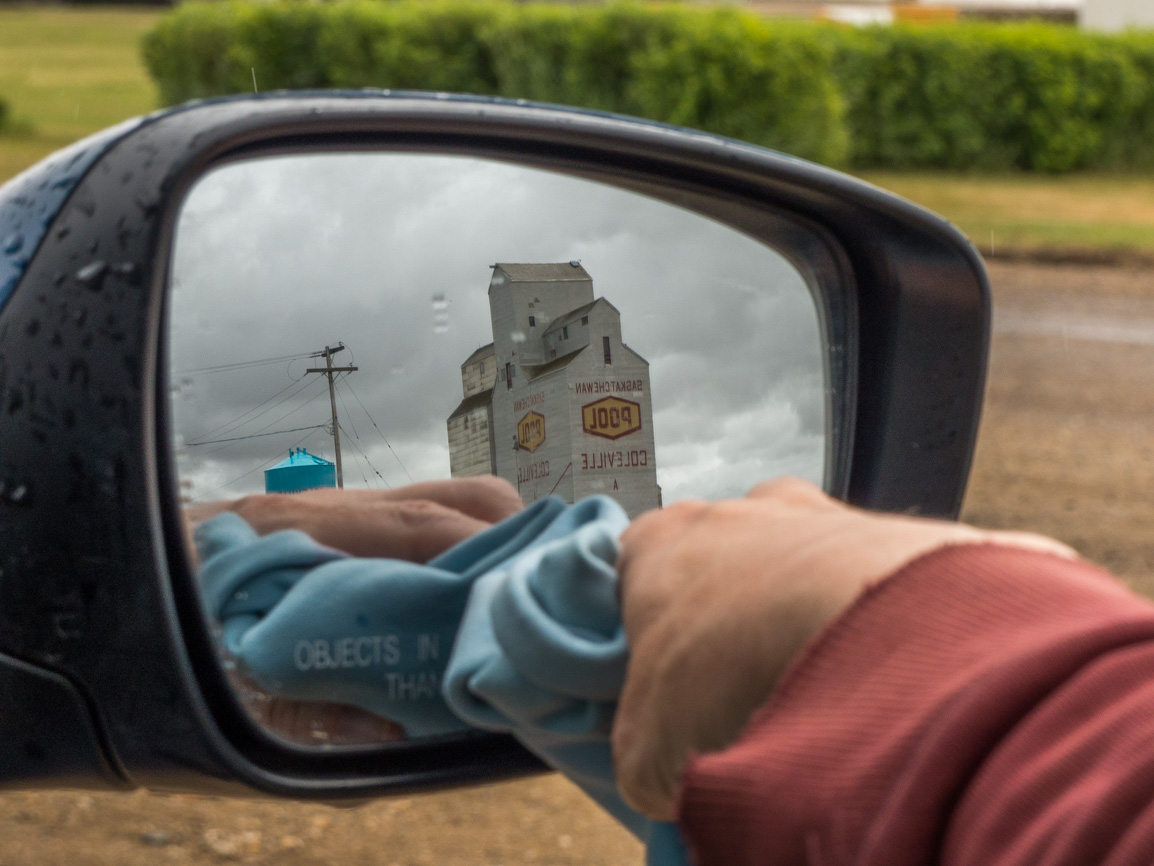
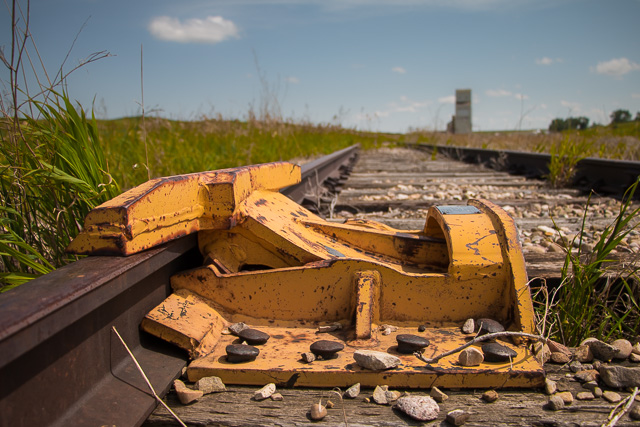
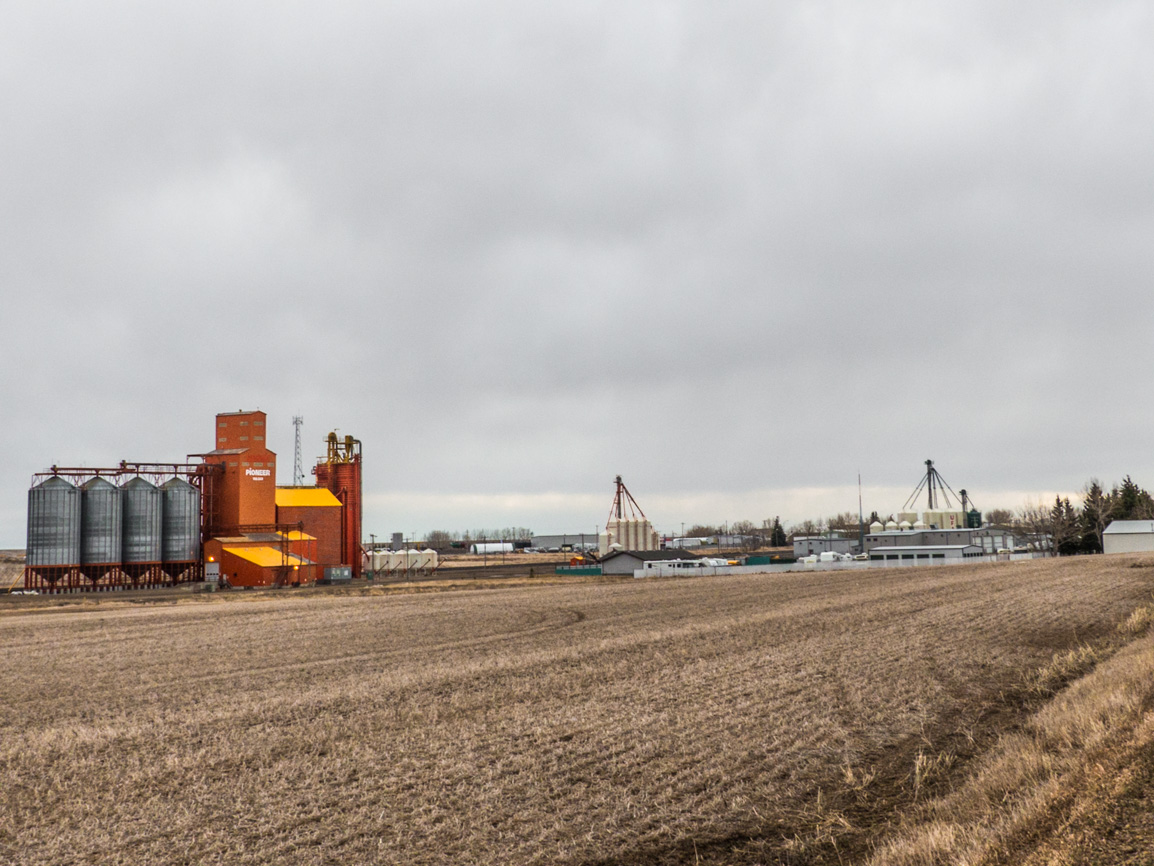
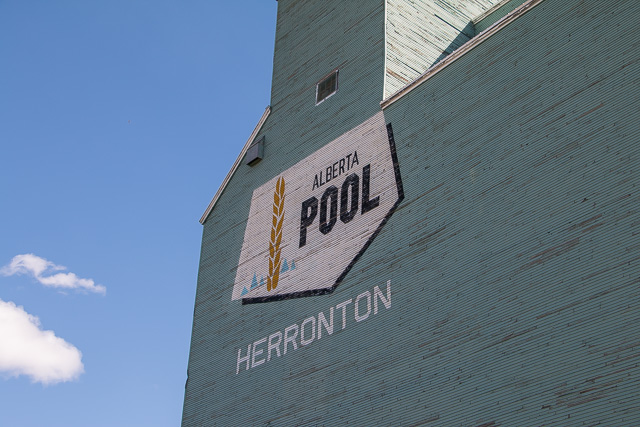
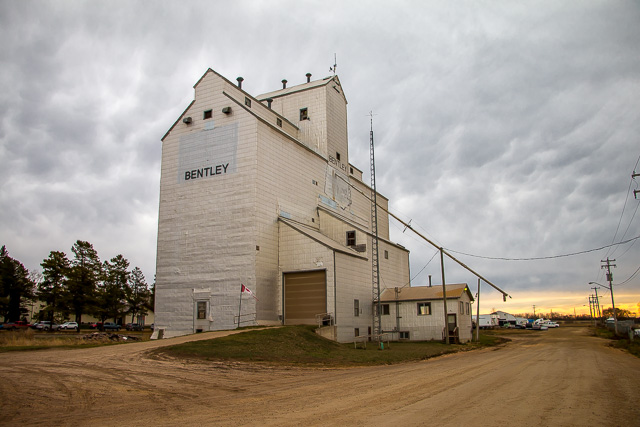
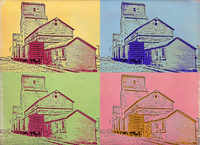






An interesting site.
Thank you for dropping by.
I have done some family history research and found my great aunt, Mary (nee Brockbank) Humfrey was an early settler in Saskatchewan. She emigrated to the prairies in 1911 from her home in Westmorland (now Cumbria),north of England. I have some interesting letters dated from 1959 which she sent to her friend back home telling of her early days of setting up a farm. In her letters she mentions the Wheat Pool Map of the Elevators in Saskatchewan. She farmed there until her death at the age of 91years in 1966. If anyone is interested in knowing more, I will be pleased to correspond. Jean Abbey (UK)
This is fantastic Jean! I’ve seen one of those Wheat Pool maps – the firm had a lot of elevators! Thank you so much for commenting.
Your Canadian grain elevators are simply amazing! You are so lucky to have so much to explore.
Your friend, Jose from Mexico.
Thanks Jose, we are indeed so lucky.
Fantastic write up! I used to know a Gary (McDonald I think) who worked at this elevator in the ’70s.
I love the connection!